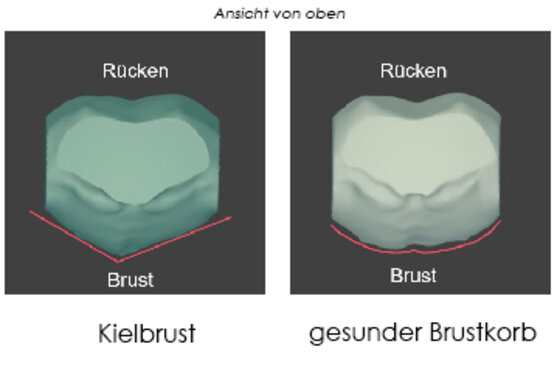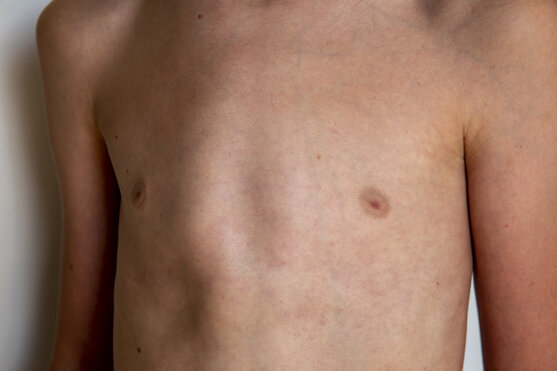
We scan your chest to create a custom pigeon chest orthosis.

We show you chest exercises and train you in the daily use of your orthosis.

Make an appointment over the phone or send us a message!
When the chest bulges outwards
What is pigeon chest?

Pigeon chest (also known as pectus carinatum) is a deformity of the chest (thorax deformity) in which the chest arches outwards and thus takes the shape of a bird’s breast. The deformation of the chest is caused by increased cartilage growth between the ribs and the sternum.
The exact causes of this disease are unknown. Pigeon chest is more common in boys than it is in girls and usually develops from 10 years of age during the growth phase.
Surgery is rarely necessary. This deformity is usually treated conservatively, i.e. with physiotherapy exercises to strengthen the muscles and with an orthosis (or brace) that corrects the curvature of the chest through targeted external pressure.

• Usually no health risk
• Back pain due to incorrect loading of the spine
• Growth disorder of a young spine
• Impaired quality of life due to disrupted body image
• Social isolation due to reduced self-esteem
• Impaired breathing mechanics can lead to reduced strength
• Mental health problems

Treatment option
Pigeon chest orthosis
Pigeon chest can generally be treated conservatively, surgically or using a combination of both methods. The choice of a form of therapy depends on the age of the patient, the severity of the pigeon chest, and the patient's individual wishes.
Conservative treatment with a pigeon chest orthosis should begin as early as possible, as the chest is still malleable during the growth phase. The prerequisite is that growth has not yet been completed.

